Unlock Your Website’s Potential: How On-Page SEO Impacts Search Rankings
Imagine being stranded in a vast ocean, surrounded by countless little islands. Your goal is to be noticed and thrive, but you’re just another speck amidst thousands of others. This scenario perfectly embodies the online world, where a multitude of websites are vying for attention, and only a select few manage to get noticed. The beacon of hope that helps you stand out from the competition? On-Page SEO! Discover the key factors that impact search rankings and unlock your website’s potential with On-Page.ai, the ultimate SEO tool that can unravel success in an instant!

On-Page SEO has a significant impact on search rankings as it involves optimizing the content and structure of individual webpages to better match user search intent. By including appropriate target keywords in strategic areas, improving site architecture, and utilizing on-page elements like titles and meta descriptions, websites can rank higher in SERPs and increase their visibility to potential customers. Good On-Page SEO is thus an essential part of a comprehensive SEO strategy that aims to improve online visibility, traffic, and conversions.
What is On-Page SEO?
In simple terms, on-page SEO refers to all the measures that you take within a website to improve its search engine rankings. This includes optimizing every aspect of your website from the overall structure and content quality to metadata and image optimization. On-page SEO focuses on making sure that search engines can crawl your site and understand its content, relevance, and user intent.
Having top-quality content is a crucial factor in ranking high on search engines. This is because Google’s algorithm always aims to provide users with only the most relevant and valuable content available, prioritizing keywords that demonstrate authority in each niche.
Think about it this way: On-page SEO is like a restaurant’s menu. It is the list of offerings that the establishment presents to its customers. Every item must have the necessary details, ingredients, and preparation methods, as well as price point, accurate descriptions, images or illustrations, to entice diners without misrepresenting what they are getting.
Effective on-page SEO takes into account other aspects besides quality content. Website load speed optimization, i.e., page speed optimization, plays an essential role in how visitors interact with your site. If your website takes longer than 3 seconds to load, you will likely lose traffic and engagement.
Now that we know what on-page SEO entails let’s explore some of the benefits of having effective on-page optimization.
- On-page SEO involves optimizing a website’s structure, content, metadata, and images to improve its search engine rankings. It focuses on ensuring that search engines can crawl the site easily and understand its content, relevance, and user intent. Having high-quality content is crucial for ranking high on search engines as Google’s algorithm prioritizes keywords that demonstrate authority in each niche. On-page SEO is like a restaurant menu; every item needs accurate descriptions, images, preparation methods, and price points to entice customers. Effective on-page SEO also takes into account website load speed optimization to improve engagement and traffic. Overall, having effective on-page optimization results in better search engine rankings, increased website traffic, and improved user experience.
Benefits of Effective On-Page SEO
Effective on-page SEO can significantly improve a site’s search engine visibility and overall online presence. Let’s explore these benefits in detail:
1. Improved Site Relevance – The more optimized your website pages are for specific targeted keywords and phrases, the higher their relevance becomes to search engines like Google.
2. Better User Experience – To keep visitors engaged and convert them into customers or loyal readers, it is essential to provide them with an optimal user experience. For example, by having a well-structured website with clear navigation, it makes it easier for visitors to find what they’re looking for.
3. Increased Traffic from Long-Tail Keywords – By optimizing your site content’s long-tail keywords, you can tap into traffic from often-neglected cornerstones of search terms and gain unexpected new audiences.
4. Lower Bounce Rates – Visitors are more likely to stay on your website when they enjoy a seamless browsing experience that meets their needs from the get-go with optimized content and appropriate headings. This helps in reducing your bounce rates and overall engagement metrics.
Imagine walking into a bookstore looking for a specific book. A good organization of books at the store will make your shopping experience easy and pleasant and prevent you from leaving empty-handed.
The benefits of effective on-page SEO are manifold as it also increases the website’s visibility, thereby generating more leads and business in the long run. By providing top-notch content that satisfies users’ search intent, you are most likely to keep users coming back frequently to consume your products or services.
Some people argue that off-page SEO is the only thing that matters since on-page optimization is just about crafting text to please Google algorithms. However, while off-page SEO plays an essential role in determining your online ranking, it should not be viewed as mutually exclusive with on-page optimization since they coexist holistically in Google’s algorithm analysis.
After exploring the benefits of on-page SEO, we can now delve into the factors affecting your rankings on search engines.
On-Page SEO Factors Affecting Rankings
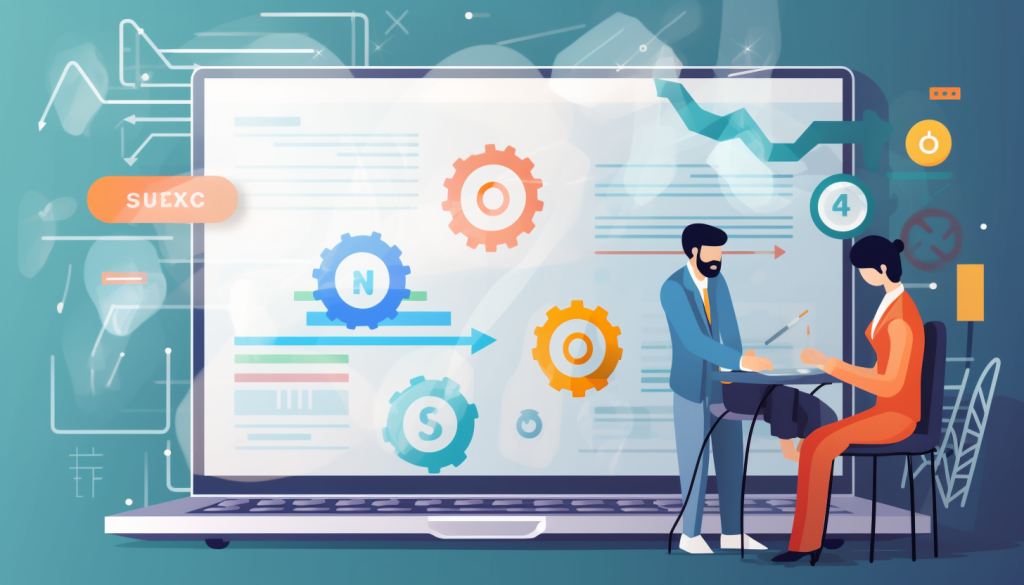
On-page SEO factors are the elements of your website that you can control and optimize to increase your website’s search engine ranking. There are several on-page SEO factors that you should consider when optimizing your website, such as content quality, keyword usage, site structure, and navigation.
One of the most important on-page SEO factors is content quality. Your website’s content should be well-written, informative, and engaging. The quality of your content can impact how Google perceives your website and how it ranks in organic search results.
Another crucial factor is keyword usage. Properly using keywords in your content can help search engines understand what your website is about and what topics you cover. However, overuse of keywords can lead to a penalty from Google or other search engines.
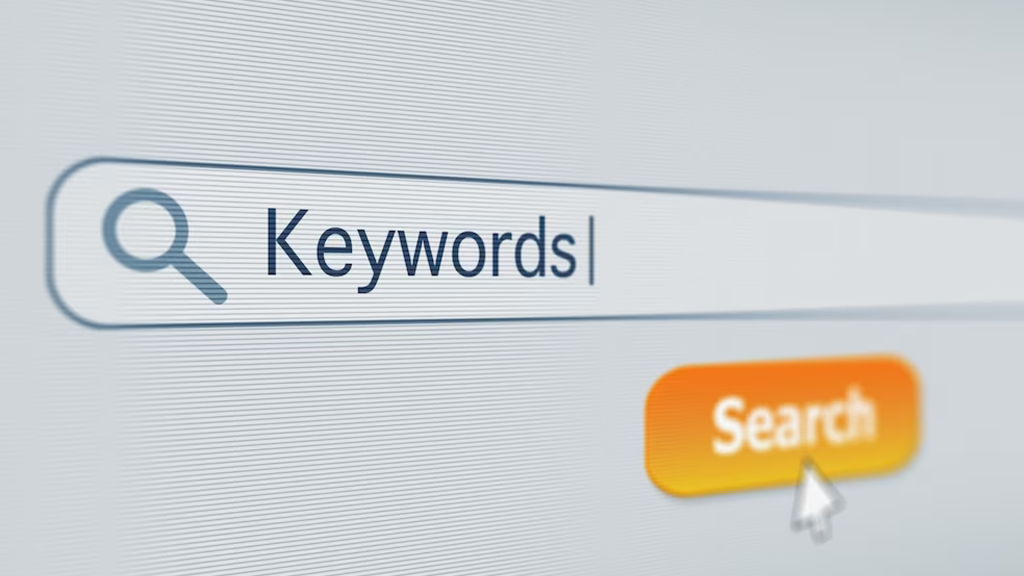
Site structure and navigation are also vital for on-page optimization. Having a clear and organized site structure makes it easy for search engines to crawl your site and understand its content. Additionally, easy navigation improves user experience and decreases bounce rates.
For example, let’s say you have a blog post about the benefits of yoga for mental health. To improve its on-page SEO, you could include high-quality visuals, incorporate keywords throughout the post naturally without keyword stuffing, add appropriate header tags like H1 and H2s, and implement internal linking strategies such as linking to other relevant blog posts on your website or resources on other websites.
Research has shown that higher-quality pages tend to rank higher in Google searches. According to Backlinko’s analysis of one million Google search results, there is a positive correlation between content quality factors such as word count, readability, use of multimedia assets with better rankings.
While keyword usage is important for on-page optimization, it is essential to avoid keyword stuffing or overusing keywords in your content. This tactic can send the wrong signals to search engines, and even hurt your website’s ranking. Instead, focus on using keywords naturally and include them in relevant places such as the URL, title tag, meta description tag, and within the content.
Now let’s look more closely at how content quality and keyword usage impact your website’s on-page SEO.
Content Quality and Keyword Usage
As discussed above, content quality is a significant factor when it comes to on-page optimization. You should strive to produce original, high-quality content that engages your audience and provides value to readers. Some factors that search engines consider when assessing the quality of your content include word count, readability, multimedia assets usage, engagement metrics (such as click-through rates), dwell time (the amount of time someone spends on your page), etc.
Keyword usage
Keyword usage plays a critical role in how Google understands the content of your site. Properly integrating keywords into your website’s copy can increase the chances of appearing higher in search engine results pages for targeted queries. However, overusing or stuffing keywords can lead to negative consequences like penalty or being marked as spam by Google.
Readability and accessibility
To improve your content’s readability and accessibility to both users and search engines, you should use short paragraphs, use subheadings to break up long text blocks, implement bullet points for lists, etc.
Engaging multimedia assets
Another crucial aspect of creating high-quality content is engaging multimedia assets. These can be images or videos relevant to the topic at hand; they keep readers interested in staying on your page longer while also providing additional context regarding whatever information lies within said media.
For instance, if you have a blog post about cooking spaghetti carbonara recipe mentioning ingredients like pancetta or guanciale would classify under natural integration instead of forcefully stuffing all kinds of related keywords without making sense.
High-quality content with proper keyword usage is like a well-prepared meal with the right ingredients that are perfectly cooked. Just as an excellent chef knows how to balance flavors and textures, a great digital marketer understands how to balance content quality and keyword usage to create high-performing content.
To sum up, content quality and keyword usage are critical on-page SEO factors that you must consider while optimizing your website for search engine rankings. By producing high-quality, original, and relevant content with appropriate keywords naturally integrated into it, you can create engaging content that resonates with your audience and ranks higher in Google searches.
Site Structure and Navigation
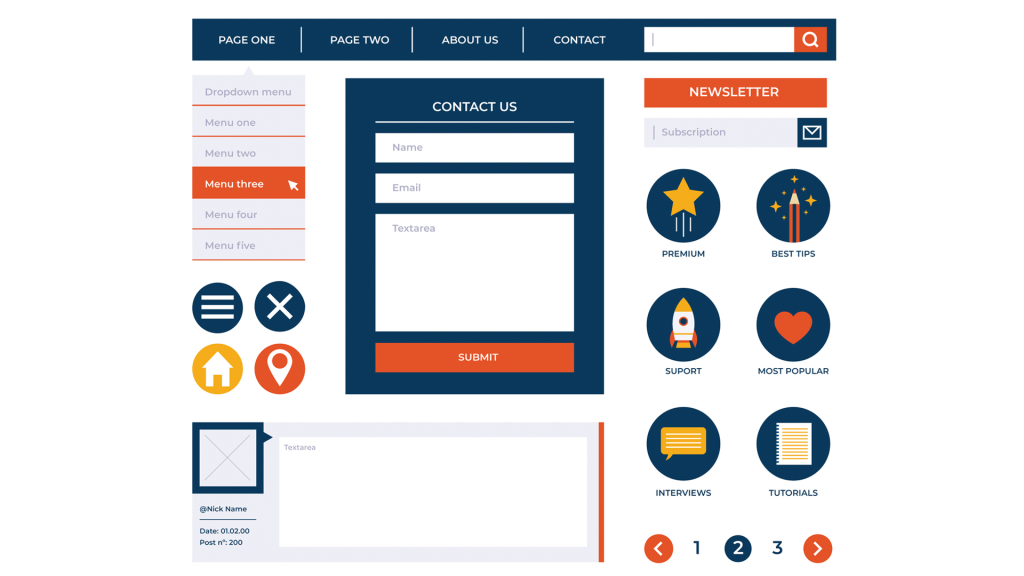
When it comes to on-page SEO, the structure and navigation of your website play a crucial role in determining its success. A well-structured website not only provides a better user experience but also ensures that search engines can easily crawl and index your site’s relevant pages. Here are some key factors to consider regarding site structure and navigation.
Organized and hierarchical
Your website’s structure should be organized and hierarchical, with your homepage at the top level followed by your main categories, subcategories, and individual pages. This makes it easy for both users and search engines to understand the relationship between your pages and how they fit into your overall website architecture.
Internal linking
In addition to hierarchy, internal linking is also an essential aspect of on-page SEO. Internal links from one page to another provide context to search engines and help distribute link equity throughout your site. For example, if you have a blog post that discusses a topic related to one of your product pages, including a link to that product page can help boost its ranking.
Some argue that having too many internal links on a single page can dilute their value. However, as long as they are relevant and add value to the user experience, there is no limit to the number of internal links you should include on a page.
URL structure
Another factor to consider in site structure is URL structure. URLs should be descriptive, concise, and readable. They should also contain relevant keywords that relate to the content on the page.
Overall, a well-organized website with clear navigation and structure can improve user experience while also boosting your search rankings.
- According to a 2020 study by Semrush, webpages that rank in the top 10 positions on Google have an average content length of 1,447 words, emphasizing the importance of comprehensive and well-structured content for effective on-page SEO.
- Research conducted by Backlinko in 2019 found a strong correlation between optimized title tags containing a keyword and higher search engine rankings, with pages ranking in the top five having 36% more keywords in their title tags compared to those ranking in positions six to ten.
- A 2021 study by Ahrefs discovered that webpages featuring a meta description with their primary target keyword have a higher chance of appearing in Google’s featured snippets, making it crucial for on-page SEO to include relevant and enticing meta descriptions.
The Relationship Between On-Page SEO and Off-Page SEO
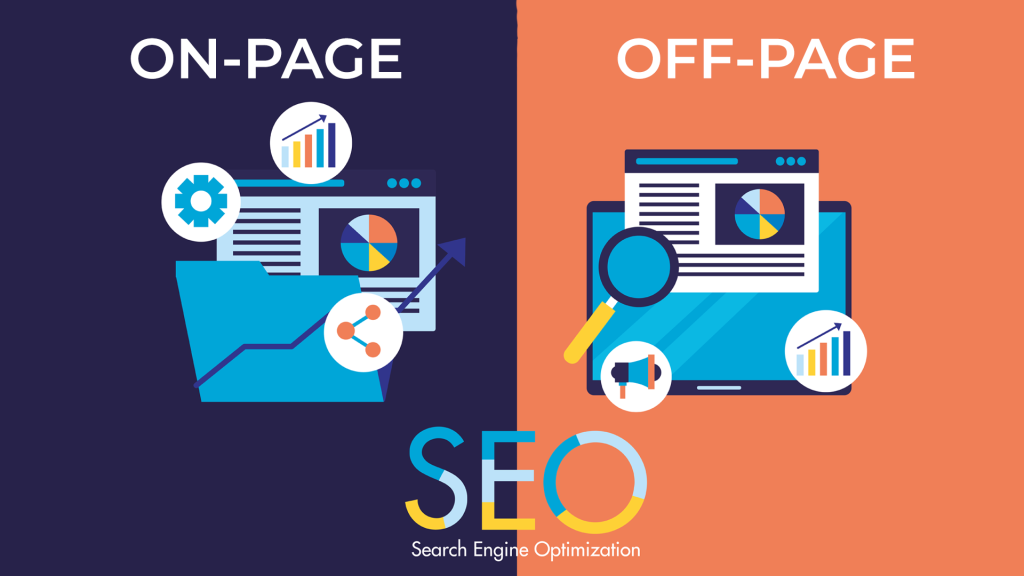
On-page SEO and off-page SEO are two critical aspects of improving your website’s visibility in search engines. While on-page SEO focuses on optimizing the content and structure of your website, off-page SEO involves building links and increasing your brand’s online presence. Here are some key things to keep in mind regarding the relationship between on-page and off-page SEO.
On-Page Optimization
While both on-page and off-page SEO tactics are important, on-page optimization should be your first priority. If your website is not well-optimized, even high-quality backlinks may not be enough to improve your rankings in search engine results pages (SERPs).
For instance, if you have low-quality or irrelevant content on your website, no matter how many external links you build pointing to that page, it will not rank well.
Conversely, some argue that off-page SEO is more crucial as without link building, no one will be able to find and link to your content without a little push.
Think of on-page optimization as building a strong foundation for a house. Without a solid foundation, it doesn’t matter if you put up beautiful walls or add-ons like paint and décor items; the property won’t sustain itself for long. Similarly, without well-optimized content on your site (the “foundation”), all other marketing efforts may fall short.
However, once you have optimized your site’s structure and content, backlinks can play an essential role in boosting your rankings even further.
Link Building
Link building can help signal to search engines that other websites consider your content valuable and authoritative. Google’s algorithm still values quality over quantity so it’s better to focus on earning fewer but high-authority backlinks unlike before where many low quality links were considered an acceptable practice.
Overall, both on-page and off-page SEO are essential components of any successful SEO strategy. By prioritizing on-page optimization and earning high-quality backlinks from reputable websites, you can improve your website’s visibility in search engine results pages and drive more traffic to your site.
Practical On-Page SEO Techniques to Apply
Now that we understand what On-Page SEO is and how it impacts search engine rankings, it’s time to consider some practical techniques to improve your website’s On-Page optimization. Here are some tried-and-tested tips:

- Focus on High-Quality Content: The center of any successful On-Page SEO strategy is quality content. Engaging Copy, relevant keywords, and readability are prerequisites for ranking higher in SERPs.
- Optimize Title Tags & Meta Descriptions: Title tags and meta descriptions play a significant role in improving your website’s click-through rates (CTRs) and subsequently boosting organic traffic. Ensure these elements accurately describe the page content, include the main Keyword Phrase, and maintain a length within Google’s guidelines.
- Make Use of Header Tags: Header tags should be used logically to create an organized and easy-to-read webpage. Proper use of header tags can significantly impact a page’s organization, making it easier for users to find relevant information quickly while also indicating to search engines what’s important on the page.
- Keywords Optimization: Formerly keyword stuffing aimed to capture rankings on any possible long-tail keyword. However, today Search Engines algorithms strictly regulate such practices leading penalties or even getting URLs banned from their Indexes. With smart contextual optimization based on Quality User Intent Modeling data, pinpoint the topics your audience wants to read about by identifying search queries people use to explore them throughout the customer journey stages – Organic Traffic acquisition would follow naturally.
- Optimize Images: The images you use not only impact user engagement but are also essential for visual design across your site—name files descriptively before loading keywords into them with title attributes creating a searchable listing for your pages in SERPS query results pages.
- Improve Website Speed: Site speed is vital for user experience and also a ranking factor in Google’s algorithm. Research has shown that conversion rates decrease on pages with a load time of more than three seconds, so optimizing images, cleaning up code, and minifying files can significantly improve page speed.
While the above tips are necessary for On-Page SEO optimization, doing all of this manually may be overwhelming – not to mention time-consuming. Thankfully, using On-Page.ai’s automated optimization tool helps businesses tackle these strategies quickly and proactively across their entire site. With its highly intuitive AI-driven system, you’ll have an SEO assistant that’s always ready to keep your website optimized to the latest standards without driving extra costs or hours from your busy schedule. Never again worry about increased traffic failing to convert into leads when you use the best tools for data-driven growth on every single visit your website receives.
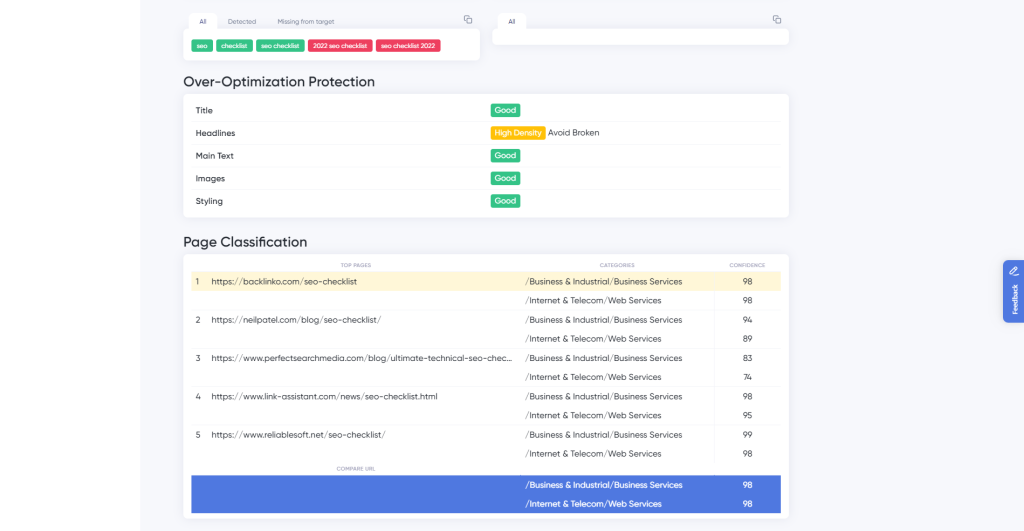
Answers to Commonly Asked Questions
What exactly is On-Page SEO?
On-Page SEO refers to the practice of optimizing individual web pages in order to rank higher and earn more relevant traffic from search engines. This involves several factors, such as optimizing the content, title tags, meta descriptions, headings, internal links, and images on a page.
A solid On-Page SEO strategy plays a key role in ensuring that your website is visible and easily discoverable by search engines. In fact, according to research by Backlinko, On-Page SEO factors had a significant impact on search engine rankings than off-page factors in 2016.
Furthermore, HubSpot found that businesses that prioritized blogging and On-Page SEO were 13 times more likely to see positive ROI compared to those who didn’t. This highlights just how important it is for businesses of all sizes to adopt an effective On-Page SEO strategy if they want to get ahead online.
In summary, effective On-Page SEO means taking careful consideration of all the elements that make up your web pages’ structure and content to improve visibility online. The right approach can lead to more visitors, leads, conversions that drive business growth over time.
Is it possible to over-optimize for On-Page SEO and have a negative impact on search rankings?
Yes, it is possible to over-optimize for On-Page SEO and have a negative impact on search rankings. In fact, over-optimization can trigger Google’s algorithmic filters, such as Google Penguin, which can penalize websites and result in the loss of search rankings.
Over-optimization occurs when website owners use manipulative techniques to try and boost their search rankings. This includes practices like keyword stuffing, using hidden text or links, and creating low-quality content specifically for search engines.
According to a study conducted by Moz, over-optimization can result in a penalty from Google and cause a significant drop in search rankings. In fact, 44% of all penalized sites were hit by Google’s Penguin algorithm due to over-optimized anchor text.
The best approach to On-Page SEO is to focus on creating high-quality content that provides value to readers while also incorporating relevant keywords in a natural way. This not only helps with search engine rankings but also improves user engagement and ultimately leads to higher conversion rates.
To sum up, while On-Page SEO is critical for improving search engine rankings, it is essential to avoid over-optimization tactics as they can negatively impact the website’s performance in searches. Striking the right balance between SEO optimization and user experience should be the primary objective of any website owner who wants to gain traction online.
How important is On-Page SEO compared to other factors that impact search rankings?
On-page SEO is one of the essential factors that impact search rankings. According to a survey conducted by Hubspot, on-page SEO holds 25% of the total ranking factors. On-page optimization refers to optimizing the content and HTML source code of your website.
While there are other equally important ranking factors such as off-page SEO, technical SEO, mobile-friendliness, user experience, etc., on-page SEO should not be underestimated. A study by Moz found that websites with strong on-page optimization have a 27% higher click-through rate in search results.
On-page SEO includes optimizing page titles, meta descriptions, URLs, header tags, image alt tags, keyword usage, internal linking structure, page speed, and more. These elements send signals to search engines about what your website is all about and how relevant it is for a particular search query.
Ignoring or neglecting on-page optimization can lead to poor rankings, lower traffic, and weaker user engagement. Therefore, it is crucial to ensure that your website’s on-page SEO is well-managed and up-to-date.
In conclusion, while other ranking factors certainly play a vital role in improving your website’s ranking position in search results pages (SERPs), on-page optimization remains an integral part of any SEO strategy. Investing time and effort into optimizing your website’s on-page elements can lead to better visibility, increased traffic, and greater revenue potential in the long run.
How can website owners measure the impact of their On-Page SEO efforts on search rankings?
To measure the impact of On-Page SEO efforts on search rankings, website owners should rely on data-driven metrics such as keyword rankings, organic traffic, and bounce rates.
Firstly, tracking keyword rankings is essential to determine the effectiveness of your On-Page SEO strategy. By monitoring your progress and making adjustments to your content and optimization techniques accordingly, you can improve your search engine positioning over time.
Secondly, analyzing organic traffic is a way to evaluate the success of your website’s visibility in search engine results pages. An increase in traffic usually indicates that your On-Page SEO efforts are driving more visitors to your site from search engines.
Lastly, monitoring bounce rates can give a clear indication of how well your content aligns with the search intent of users. High bounce rates suggest that visitors aren’t finding what they’re looking for on your website, which could indicate that you need to adjust your content or optimization strategies.
According to a study by Backlinko, pages optimized for On-Page SEO have an average click-through rate 10 times higher than those that aren’t. Furthermore, research from SEMrush states that optimizing just one component of On-Page SEO (such as title tags or meta descriptions) can result in a 7.2 percent boost in rankings.
In summary, tracking keyword rankings, monitoring organic traffic, and analyzing bounce rates are effective ways to measure the impact of On-Page SEO efforts on search rankings. Utilizing these metrics provides website owners with actionable insights into their optimization strategies and helps improve their overall online presence.
What specific On-Page SEO techniques have the largest impact on search rankings?
As we all know, search engines like Google regularly update their algorithms to improve the quality and relevance of the search results. However, there are still certain on-page SEO techniques that have stood the test of time in terms of providing a positive impact on search rankings.
Here are some of the most effective on-page SEO techniques that can potentially boost your website’s ranking:
1) Keyword Optimization: This involves researching and selecting relevant keywords for your website’s content and strategically placing them in the title tags, meta descriptions, headers, body text, and image alt tags. According to a study by Ahrefs, pages that rank among the top 10 positions in Google have an average word count of 1,447 words and include the target keyword at least once.
2) Content Quality: Search engines prioritize high-quality content that offers value and answers users’ queries. So it’s important to create content that is engaging, informative, and unique. In fact, according to HubSpot’s Marketing Statistics for 2021, 70% of marketers actively invest in content marketing.
3) Mobile Responsiveness: With mobile devices accounting for more than half of all internet traffic worldwide, having a mobile-responsive website has become crucial for SEO. In fact, Google now uses mobile-first indexing to rank websites according to their mobile usability.
4) Page Speed: The loading speed of your website can significantly impact user experience and search rankings. According to Google, pages that load within 2-3 seconds have lower bounce rates and higher conversion rates compared to slower pages.
Implementing these on-page SEO techniques is essential if you want to improve your website’s visibility and ranking on search engine results pages (SERPs). However, keep in mind that SEO is a long-term strategy that requires consistent effort and adaptation to stay ahead of the competition.




